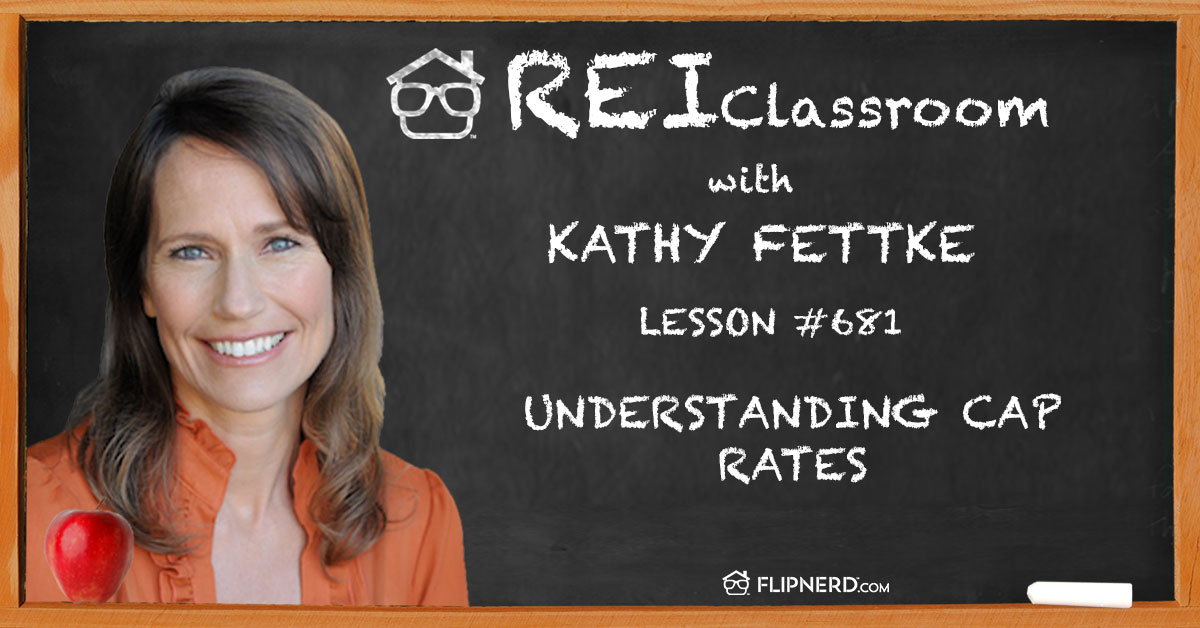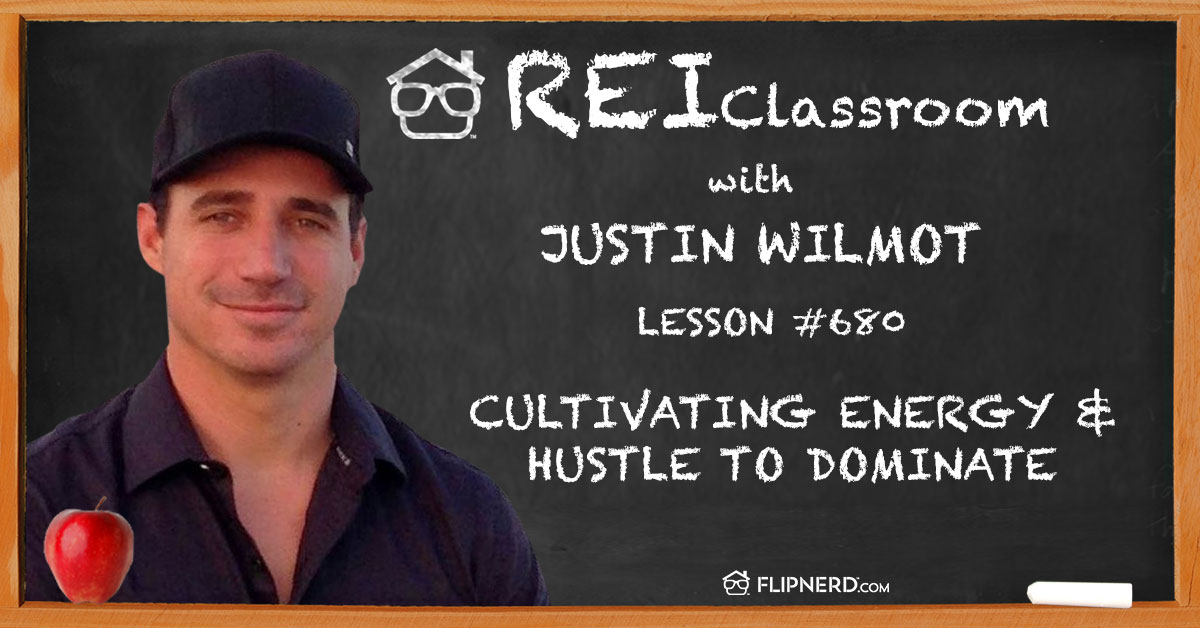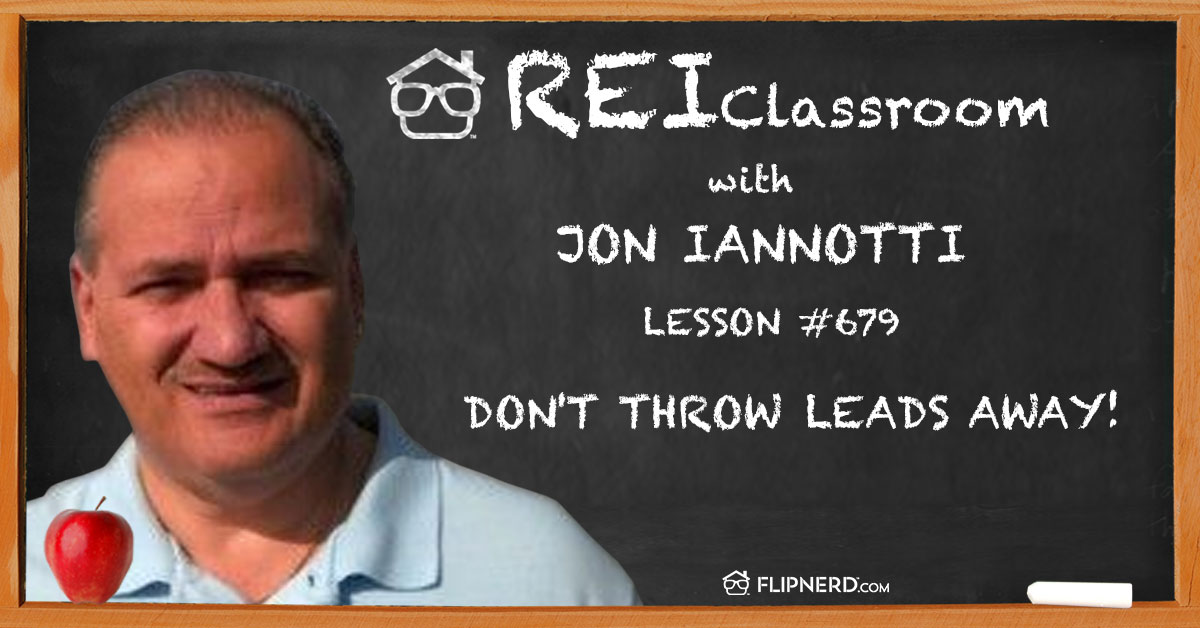Today’s REI Classroom Lesson
Michael Blank shares with us what you need to consider in order to achieve financial freedom.
REI Classroom Summary
Being strategic with your investments, expenses, and financial plan can help you reach your goal of financial freedom down the road.
Listen to this REI Classroom Lesson
Real Estate Investing Classroom Show Transcripts:
Mike: Welcome back to the flipnerd.com REI Classroom, where experts from across the real estate investing industry teach you quick lessons to take your business to the next level. And now, let’s meet today’s expert host.
Michael: Hi there. My name is Michael Blank and I’ll be your instructor today. Today, we’re going to talk about how to calculate your rat race number.
Mike: This REI Classroom real estate lesson is sponsored by uglyopportunities.com.
Michael: Okay. So we’re all in real estate because we want to quit the rat race, but have you ever actually sat down and figured out what your rat race number is and what you need to do to actually achieve it? So this episode has kind of two parts, how to calculate your rat race number and the best way to get there with real estate in our lifetime.
So the first thing, what is a rat race number? So rat race number, I took it kind of from Robert Kiyosaki, the Cashflow board game. So you all know that you’re kind of financially free when your passive income equals or exceeds your expenses. So there are two ways you can achieve your rat race number. You can increase your passive income and/or you can decrease your expenses. So here’s how to calculate your rat race number. So the first step is how much are you currently spending? And there are different ways to do this. I use something called mint.com. It allows you to track your expenses and to really kind of see what you’re spending each month. And you do this two or three months and you can establish a budget from that. You can also do it with a spreadsheet. So that’s the first step.
Now, the second step is how can you spend less? In other words, look at each category and see what you could do without. Now, this is a really painful step. I know this because we love the way our life is. We love the French vanilla caramel macchiato, we love our 18,000 cable channels, we love our cars and houses. And once you have these things, it’s very difficult to let go of them. But think about this, and this really comes down to how badly do you really want to be financially free.
I mean, if you really want to be financially free, wouldn’t you simply sell everything and move into a mobile home park, where you’re spending $500 a month, and you need like two rental properties? I mean, think about it, if you’re really serious about it, wouldn’t we do that? So if we don’t do it, it means that we’re actually not really serious about it. So I’m exaggerating to make a point, but you know what I’m talking about.
Here’s another way to think about this. A reasonable rental property should put at least $100 per month in your pocket after all expenses, maybe even a little bit more. So for every hundred dollars that you save per month, it’s the same as you purchasing one rental property. That’s how impactful reducing your expenses is, in a real estate concept. So I’ve been through this myself actually, several times, and I can tell you how painful it is to downsize something. We’ve downsized a house and cars, and it is really, really painful. But it was worthwhile afterward. So what are you prepared to do?
Now, so let’s talk about your number. Let’s assume that you’ve figured out what you’re actually spending, using Mint or a spreadsheet, or something like that, and you’ve determined that you could live with $5,000 per month if you really tightened your belt. So that’s about $60,000 a year. But, let’s not forget about taxes. You’ve got to pay taxes. So let’s say $60,000 a year is what you need, then let’s say you’re paying 30% in taxes. The way you calculate that is you take 60,000 and divide it by 70, and it comes it to be, essentially, about $7,100 a month. So your rat race number is about $7,000. You need passive income for $7,000.
So now, how are you going to get there? So let’s think about this. If you really want to get there, what’s the best way to get there? Now, if you’re flipping houses right now, then you know you’re getting chunks of income, which is great, but the problem with that is there’s nothing passive about flipping houses. I know this because I’ve flipped about 30 houses. So let’s talk about building a rental portfolio. So if you’re building a rental portfolio, that definitely qualifies as passive income so you can check the box on that.
Now, how many houses would you need to get $7,000 in monthly income? It depends a little bit how good of an investor you are. But let’s say you get $200 per month in cash flow off a rental. That means you need about 35 houses to retire. So just be mindful of that. If that’s what you want to do with single-family houses, you would need about a portfolio of 35 houses.
Now, I think there’s a better way, and that’s because I talk and write about apartment building investing. So I’m going to say, “Hey, you know what? A better way is apartment building investing.” Why? Because they’re easier to scale. If I want to have 35 units, I can get there by buying a single 35-unit, or I can buy a 10-unit, followed by a 25-unit. I can get there in two hops. They’re easier to finance. The financing is cheap. Banks are throwing money at you if you’re buying multi-family. And, best of all, you don’t have to personally guarantee it. So this is why I like multi-family investing.
Now the question is now how do we get started multi-family investing? That’s a great question because now I’ve piqued your interest. But I’m not going to answer that in this video because I have other videos. And you can go to themichaelblank.com for all my free resources, but Flipnerd’s REI Classroom has also a lot of my episodes. So you go to flipnerd.com, click on “Shows” in the upper right hand, and start typing Michal Blank, that’s B-L-A-N-K, and all my episodes will kind of come up in the search box. And then there, you can read about getting started, raising money, analyzing deals, all kinds of stuff.
So sit down and figure out your rat race number. See if you can tighten your belt to get that expense down and then really sit down and figure out what real estate strategy you want to pursue to get there. All right. Thanks very much. I’ll catch you in the next episode.
Mike: HomeVestors, the “We Buy Ugly Houses” folks, is a franchised system of hundreds of real estate investors that have purchased over 65,000 houses. If you’d like to learn more about the most powerful real estate investing system in existence, whether you’re a pro looking to take your business to the next level or whether you have no experience at all, but a burning passion to be successful in real estate investing, please visit flipnerd.com/ugly to learn more.
Please note, the views and opinions as expressed by the individuals in this program do not necessarily reflect those of flipnerd.com or any of its partners, advertisers or affiliates. Please consult professionals before making any investment or tax decisions, as real estate investing can be risky.
Are you a member yet of flipnerd.com, the hottest real estate investing social community online? If not, you can join for free in less than 30 seconds and get access to hundreds of off-market deals, vendors in your market to help you in your business, and you can start networking with thousands of other investors just like you. Get your free account now at flipnerd.com.
Please check out the FlipNerd family of real estate investing shows where you can access hundreds of expert interviews, quick tips and lessons from leaders across the real estate investing industry. They’re available at flipnerd.com/shows or simply search for FlipNerd in the iTunes store.










